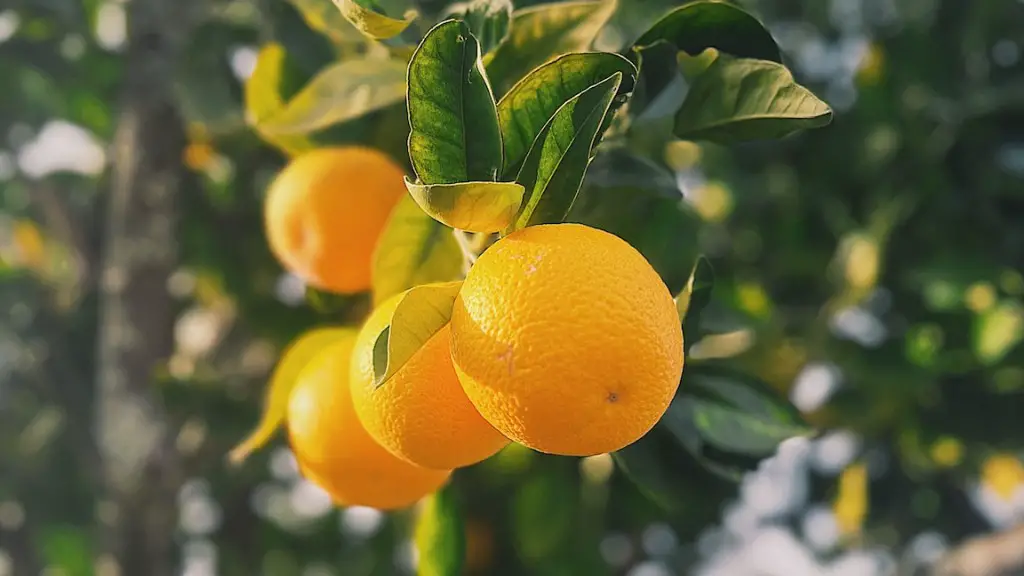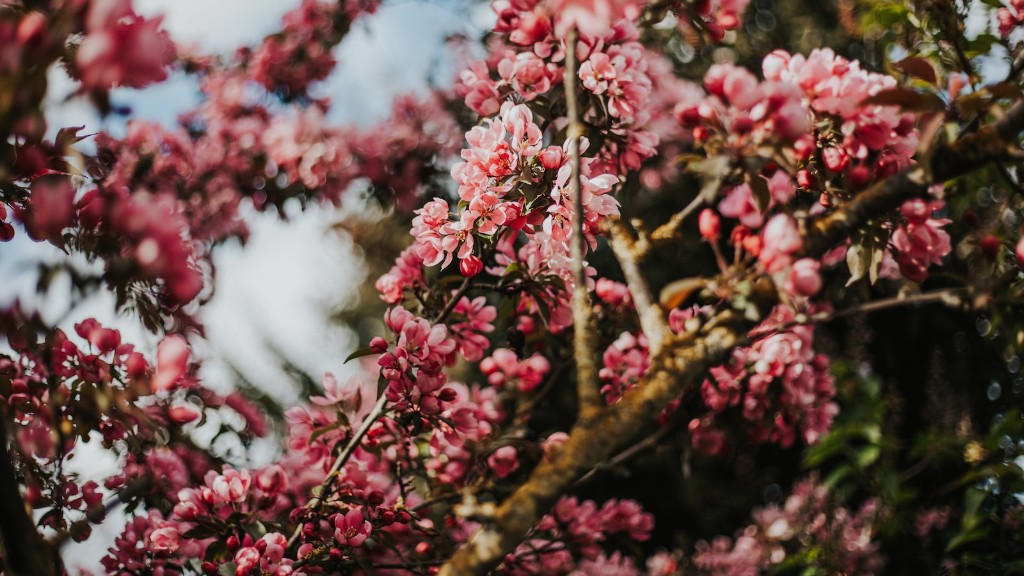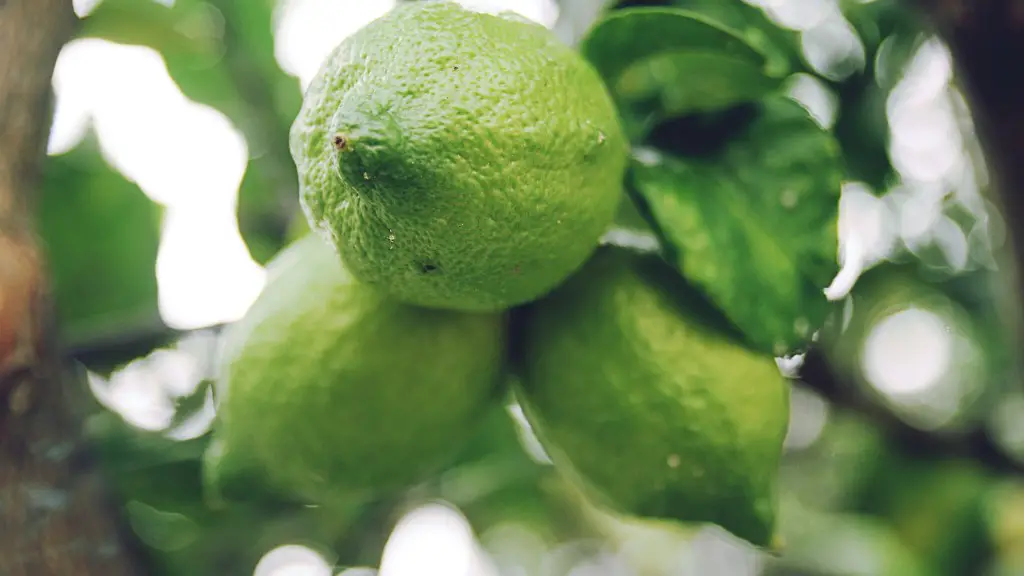Best Time to Plant Cherry Trees in the UK
When it comes to planning for your garden, knowing the best time to plant cherry trees in the UK is essential for a successful crop. Cherries are one of the most popular fruits in the UK, as they are so versatile and full of flavour. The right variety is important as well, when deciding when to plant cherries in the UK. Different varieties are suitable for different climates and soils, so it’s important to find the one that is best for your garden.
Generally, the best time to plant cherries in the UK is in the autumn months. It’s important to plant them early enough to allow the roots to establish before the ground freezes. This mean planting needs to be done about six weeks before the first frost of winter, which varies depending on your location within the country. If planted too late, cherry trees may not become properly established before winter, and may not develop heartwood in the following season.
When planting cherry trees in the UK, preparation is key. Beforehand, it is important to find out what type of soil is best suited to the variety you are planting. Most cherries prefer well-drained soil, so it is advisable to mix in some soil conditioner when planting. Additionally, tree spikes should be used around the tree. These will encourage roots to develop, as well as provide much needed nutrients that cherries need to begin fruiting.
It is also essential to ensure the right environmental conditions are met when planting cherry trees in the UK. This includes ensuring that the tree gets plenty of light and air, in order for it to grow and develop correctly. During planting, it is important to add a stake for extra support and prevent it from toppling over, especially during winter. If the tree is planted in an exposed location and is likely to be battered by the elements, it is advisable to add some evergreen or deciduous shrubbery around the base of the tree to protect it from winds.
If planting cherry trees from a nursery, it is important to inspect the tree for any signs of disease or damage before buying, as this could prevent the tree from producing healthy fruit. Additionally, it is important to check the roots of the tree. If the roots are pot-bound, it can be very detrimental to the health of the tree. The best way to avoid this is to opt for a container-grown tree, as the roots of the tree can be examined before buying, and the container will act as a form of protection and will make transplanting easier.
Pruning Cherry Trees in the UK
When growing cherry trees in the UK, pruning should be done regularly, as it is essential for healthy growth and development. Pruning should begin in the first year, as this will help shape the tree structure, and will encourage good fruiting in following years. Pruning is most successful during the summer months, when growth is active and the development of disease can be restrained.
Before pruning, it is important to inspect the tree for any excessive branches or deadwood. Once found, it is best to remove them first as this will limit the damage caused by pruning. Additionally, it is important to think about being selective with pruning, as this will help maintain the overall tree shape, which will benefit fruiting in the long term.
When pruning cherry trees in the UK, it is important to take great care in the process, in order to avoid any damage to the branches or trunk. Sharp and clean cutting tools should be used, as this will ensure clean cuts and avoid any disease. Additionally, cutting at the right angle is important and should be done at 45 degrees, in order to ensure good wound closure and healthiness of the tree. Smaller cuts should also be made on young branches, as this will encourage more side branching and more fruitful locations.
Pruning cherry trees can be beneficial beyond shaping the tree and encouraging fruitful locations. Proper pruning can also increase air circulation, light penetration and reduce the likelihood of disease. These are all essential for optimum cherry tree health, as the lack of any of these can cause harm to the tree and reduce its fruiting capacity.
Fertilising Cherry Trees in the UK
Fertilising is another important factor that should be considered when planting cherry trees in the UK. Cherry trees benefit from additional nutrients, especially nitrogen and potassium, as these help to develop strong trees with lots of healthy fruit. When fertilising cherry trees, it is important to use a balanced fertiliser, as this will ensure that the tree is receiving all the essential nutrients it needs.
When fertilising cherry trees in the UK, the general rule is to fertilise once in spring and once in autumn. This can be done by scattering the fertiliser on the soil and incorporating it in. Additionally, applying a mulch, such as compost or manure, can be beneficial as this not only provides an extra layer of protection for the roots and soil, but can also improve fertility in the long term.
It is also important to know how much fertiliser to apply to cherry trees. This can be determined by the size of the tree and the local soil fertility levels. An excessive amount of fertiliser can be damaging, so it’s important to apply the correct amount. This can be done by using a soil test and soil nutrient analysis, which will provide details of pH levels, as well as micronutrients and macronutrients present in the soil, and how much of each is necessary for a healthy cherry tree.
Fertilising cherry trees in the UK can be beneficial for long-term health and productivity. Not only will it help fruit set, but it can also prolong the life of the tree. Performing regular soil tests, and applying the correct amount of fertiliser, will ensure that the tree is receiving all the essential nutrients it needs to remain healthy and produce beautiful fruit.
Propagating Cherry Trees in the UK
When growing cherries in the UK, propagating from cuttings or layering is a great way to produce a new crop of trees. There are many different methods of propagating cherry trees, but the most common is by taking semi-ripe wood cuttings and layering.
Firstly, cutting a number of well-matured shoots off the mother tree that are pencil to finger thick are suitable for propagate. These cuts should be done in the late summer months, in order to allow sufficient healing time, before being planted. Therefore, the tree should be cut back to shape and thinned before taking the cuttings, as this will make the cuts easier.
With layering, an existing branch is bent down to the ground and should be securely pegged in place. If this is done in autumn, the roots will develop over the winter period and can be planted out once the season has changed. If possible, the branch should be covered with mulch or compost.
When propagating cherry trees in the UK, it is important to protect the young trees from severe weather conditions, predators and disease. The easiest method for doing this is to cover the trees with a fleece or cloth, directly after planting them. This will help to retain warmth, as well as support the growth of the newly planted trees.
By propagating cherry trees in the UK, growers can ensure a new crop of healthy, productive trees every season. This can be beneficial, as it means more cherry trees that can look beautiful, as well as provide masses of delicious and juicy fruit.
Harvesting Cherry Trees in the UK
When the time comes to harvesting cherry trees in the UK, ripe fruit should be ready within twelve to eighteen weeks after flowering. Depending on the variety, the harvesting season varies, with some being ready to harvest as early as July, while others can be picked until late September.
Before starting to harvest cherry fruit, it is important to inspect them for signs of disease and pest infestations. Fruit that is unusable should be removed, as this can prevent the spread of any possible problems to the remaining fruit. Once all the fruit has been inspected, harvesting can commence.
The best way to harvest cherries in the UK is to gently twist them away from the stalk. Additionally, it is best to use scissors to prune away the stalk if necessary. If the cherries have been picked when still unripe, it is possible to ripen them by placing them in a paper bag and leaving them at room temperature.
Once the cherries have been harvested, they can be eaten, cooked or stored. For storing, they can be placed in an airtight container in the fridge, enhancing their shelf-life. If the cherries are to be used in a recipe, they should be washed and stemmed. Finally, they can be frozen in a single layer on a baking tray and then transferred to a container or bag once frozen.
By following these simple steps, harvesting cherry trees in the UK can be a rewarding experience. The process is relatively simple and the fruit can be used for many different applications, making them a versatile and delicious addition to any garden or kitchen.
Diseases Affecting Cherry Trees in the UK
As with most plants, cherry trees are susceptible to disease when growing in the UK. While there is no single treatment that can prevent all diseases, it is important to be aware of any possible problems and to take steps to limit the damage caused.
The most common disease to affect cherry trees in Britain is the bacterium Pseudomonas syringae, which is responsible for causing bacterial canker. This disease is characterised by swollen stem lesions, leaf yellowing and necrotic spots on fruit. Canker can be managed by pruning away any infected areas, as well as applying a copper-based fungicide to the tree.
Another common fungus seen in UK cherry trees is Monilinia. This fungus is seen mainly in late summer and can cause dieback, as well as mummified fruit that could act as an infection source for the following year. This can usually be managed by removing any infected areas and disinfecting pruning tools, as well as providing adequate spacing between trees.
The most devastating disease to affect cherry trees in the UK is Powdery mildew. This is caused by a number of fungi, and is characterised by white powdery spots on leaves, flowers and fruit. This disease is difficult to manage, as it is unaffected by chemical treatment, which means its spread can be difficult to limit. To do so, using a good form of cropping hygiene and removing any affected foliage is crucial in preventing its spread.
By being aware of the possible diseases and taking appropriate measures, it is possible to manage any disease outbreaks and maintain healthy cherry trees in the UK. This ensures that the trees remain productive and provide an abundance of delicious fruit for years to come.
Pests Affecting Cherry Trees in the UK
In addition to diseases, pests can also result in damage and affect the health of cherry trees in the UK. The most common pests seen on cherry trees are aphids, which are small sap-sucking insects. These infestations can be identified by the presence of a sticky substance on leaves and stems, as well as a yellowing of the foliage. Aphids can be controlled by using sticky traps or insecticides, both of which are relatively safe and effective.
Another common pest on cherry trees in the UK is the codling moth. This species is most evident from May to June, and is identified by the presence of small worms on the fruit. These worms create tunnels inside the fruit, making it inedible. To prevent their infestation, it is important to keep the soil around the tree healthy and to use pheromone traps to pin-point their nesting sites.
Cater




